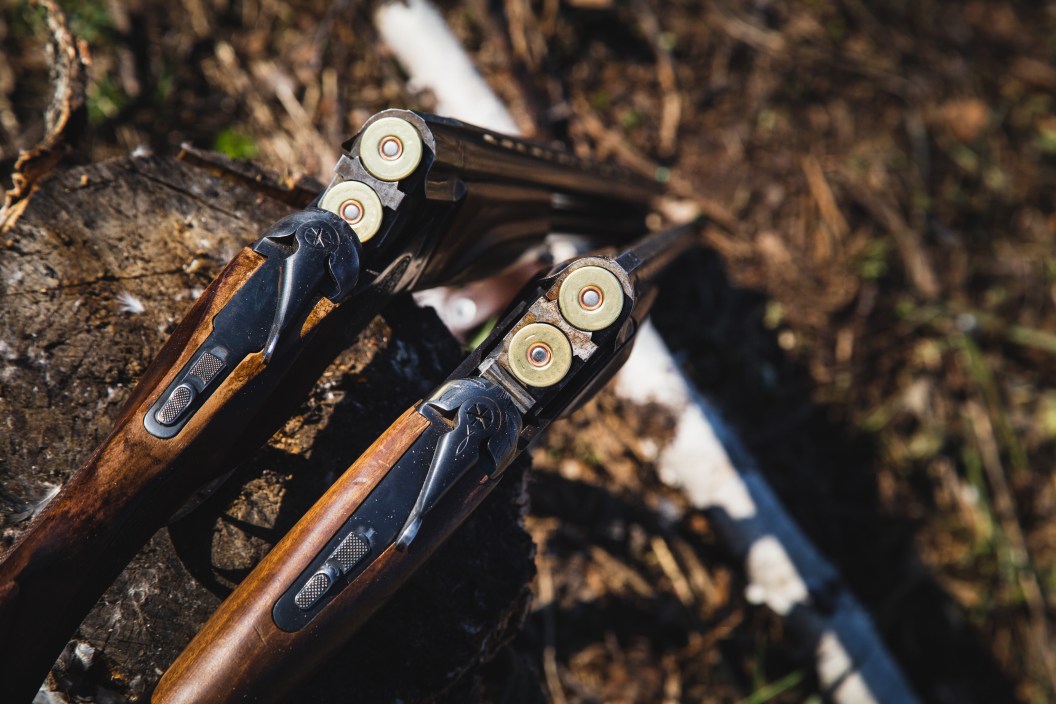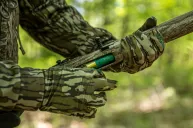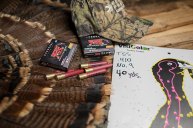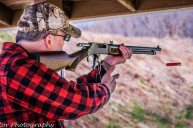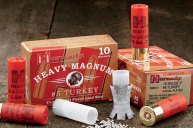I was out in eastern Montana the first time I ever saw what I'd consider a true light turkey gun. By "light," I don't mean a turkey gun with all sorts of fancy cutouts built with tactical composites. (If you hunted turkeys anytime around 2010, you know what I mean.) What I mean is, that I ran into another turkey hunter carrying around a .410, a gun that's the bore size equivalent of a 67½ gauge.
I'd seen a light shotgun like that before, but it was normally a hunter's kid toting it around, mostly so they'd have something to hold and feel like they were in the game. Back then, everyone who was serious about killing turkeys seemed to shoot a tight-choked 12 gauge stuffed with 3 ½" magnum shells. Invariably, they kicked like mules. It was common knowledge that's what you needed to push all that #4 or #5 shot downrange. To any real turkey hunter, a .410 was laughable in the turkey woods—not nearly enough gun.
But there I was, standing on an eastern Montana backroad, looking at someone who was definitely a real turkey hunter, and he was carrying a .410 shotgun done up with a top-end choke, red dot, and apparently some custom internals. Since then, I've only seen more of the same, and if you've done any sort of research into turkey guns over the last five or so years, you've seen these guns (mostly in 20 gauge), too. So what changed about shotguns in the last half decade or so?
Tungsten Shot Changes the Small-Bore Game
As it turns out, what changed were the loads. Tungsten loads, popularly Federal Premium's TSS, changed the game.
Back when I was learning to hunt, the reason you shot #4s at turkeys was that they were heavy enough to have energy downrange but small enough that you could get them to pattern nicely. That heavier shot and denser pattern gave you some insurance when a golf-ball-sized head popped up at 40 yards. Even with a 3 ½" mag, that used to be considered a borderline poke.
Tungsten, on the other hand, is significantly denser than lead, meaning you could replace your #4 lead with #7 tungsten and still expect it to carry the same energy downrange. (It's also a non-toxic alternative to lead shot.) The big advantage to this is more pellets per load. An ounce load of #4 lead shot is about 135 pellets. An ounce load of #7 tungsten is in the ballpark of 400 pellets per load.
Yeah man, that is a lot.
A Light Shotgun: Plenty of Killing Power, Lot Less Kick
When it comes to pellet count, an ounce of tungsten shot carries around 400 pellets whether it's coming out of a 12 gauge, a 20 gauge, or a .410. (I know at least one of you is screaming at your computer or phone about wads and pellet volume/packing density—and you're right—but that's a different article and all of this is broad strokes for demonstration purposes.) Of course, your powder capacity drops as you downshift from a 12 gauge to a 20 gauge, and so does your speed—an essential component to the turkey-killing equation. So what do we do if we want to take full advantage of the tight patterns and pellet count tungsten has to offer?
Well, assuming you can handle the recoil, you shoot a 12 gauge 3 ½" magnum shell full of tungsten, jelly-head some turkeys, and ice your shoulder when you get home. Enjoy sighting that red dot in; your wallet is going to hurt more than your shoulder at $20 per shell (but it doesn't have to: read about my process for patterning a shotgun here). Jokes aside, your shoulder is going to hurt—a scatter gun shooting that 3½-inch mag with a 2¼-ounce payload can kick roughly twice as hard as a .300 win mag.
Alternatively, you can do what it seems like everyone else is doing and shoot a lighter gauge.
Think about it: If you're willing to carry around a heavier light gauge shotgun, you can reduce the felt recoil while still shooting a high-performing load. A gun is only as good as the shooter behind it, and a hard recoiling gun is hard to handle. I don't care how many pellets you're putting out there, even a 15" magnum load can't scare a bird to death. To kill a turkey, you need to be able to hit a turkey and to hit a turkey, you need to shoot well.
On the flip side, shooting a lighter bore offers you the option of carrying a lighter gun. This is ideal if you're a run-and-gun hunter tromping miles on public land. At the truck, the weight of a gun doesn't mean much, but five miles into a hike, you start to get why serious ultralight hikers cut the handles off their toothbrushes. A fast-handling, light shotgun can be a pleasure to roam with.
Light Shotgun Compromises
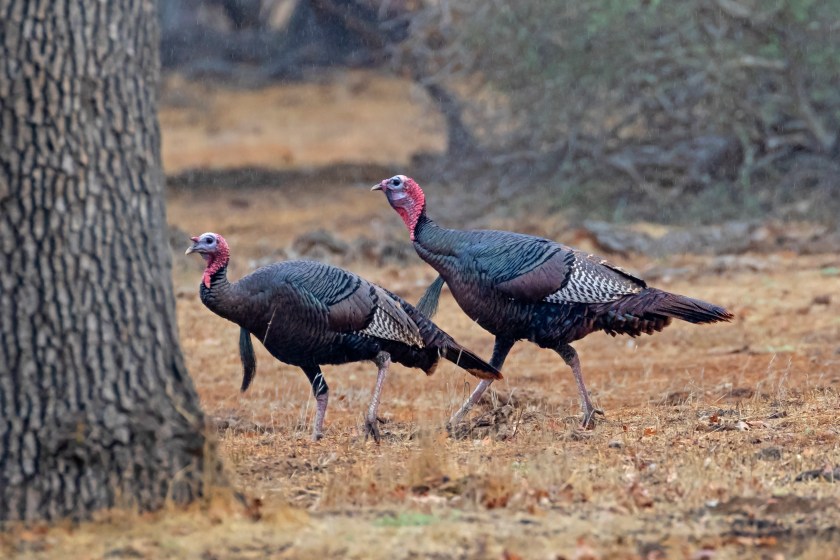
Getty Images, KGrif
"But what about the disadvantages, Hayden?" I know, I know. I'm getting to them.
The compromise is, of course, on speed, power, and payload—but barely. Even dropping from a 3 ½" 12 gauge tungsten load to a 3" 20 gauge tungsten load results in a ballpark loss of speed from around 1300 feet per second to 1200 fps. In my mind, that's pretty negligible.
The loss of payload is technically more significant, but this author isn't sure how much that matters. Compared to a 3 ½" 12 gauge, you lose about ¾ of an ounce of pellets—but at around 400 #7 pellets in a 3" 20 gauge load, who's really counting? Despite whatever disadvantage 400, as opposed to 700 pellets, represents to you (and maybe the maximizing pellet count is the most important thing to you), at a certain point, I think we have to draw a line. I wouldn't shoot an elk with a .223, but I'm not chasing them around with a .50 BMG either.
Light Shotgun Options and Solutions
Finally, I want to point out one major advantage and disadvantage: to build a light-gauge, tungsten-launching, turkey-stomping hot rod means you probably have to buy a new gun. If you were looking for an excuse to hit Sportsman's Warehouse and pick up a new semi-auto, here it is. If, like me, you don't quite have it in your budget right now (although that only occasionally stops me), that can pose a problem.
Here's what I—someone who has lusted after one of these high-octane light gauges since that fateful day on a Montana backroad—have done. I split the difference. A few years ago, I bought the best 12 gauge semi-auto I could (or couldn't) afford, knowing that I'd cover my bases from pheasants and ducks to geese and turkeys. When turkey season rolls around, I pop on a quality red dot, check the zero, and shoot the lightest 3" tungsten load I can get my hands on. My wallet doesn't hurt quite as much as it could, my shoulder feels alright, and I stoned two big toms last year at around 60 yards.
The bottom line is this: aside from the weight of the gun, this actually isn't a conversation about shotguns at all. What we're really talking about are the merits of tungsten loads. When it comes to tungsten, you can get great performance out of lighter loads than have been traditionally used in the turkey woods. For better shooting, using a lighter load that offers near-maximum performance as well as a comfortable shooting experience (potentially out of a light gauge shotgun), is something I advocate.
But since we're talking about guns, my take is that, if you can afford it, have a spare light gauge kicking around, and/or have a specific reason to get a souped-up lighter gauge, build that gun! If you can't afford it, don't have a spare kicking around, or even a specific reason you want that gun, I'd stick with what you've got. Look, people aren't killing more birds because of fancy ultralight turkey guns, it really has to do more with the ammo they're shooting, and that same (or greater) power is available to you in whatever gun you have right now.
Above all, remember, the best turkey gun is whichever one gets you out there.
